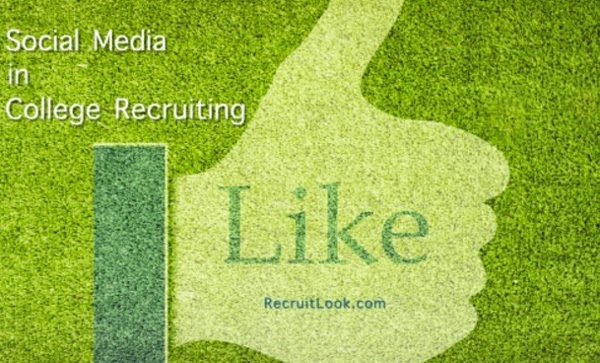NCAA updates social media recruiting rules
reposted from our partners at RecruitLook
Social media in college recruiting has become too big for the NCAA to control. The solution? Change the rules for how college coaches can interact with potential prospects on social media. The NCAA could no longer effectively enforce its old rules, which prohibited coaches and schools from acknowledging anything prospects posted on social media. College coaches could direct message recruits, but they could never like or share any posts publicly. This recently changed with the latest update to the NCAA rules.
The NCAA is recognizing the growing trend to use social media for recruiting, so they made the following changes: According to the new NCAA rule, “An athletics department staff member may take actions (for example: ‘like,’ ‘favorite,’ ‘tag,’ etc.) on social media platforms that indicate approval of content on social media platforms.” Continuing with the new rule: “Coaches or staff members can also share articles about prospects as long as they do not ‘tag’ or mention the player’s name. They also can retweet a player’s post, then address the post in a separate tweet, again without mentioning the prospect’s name.” The NCAA stated that college coaches still cannot tweet directly to prospects or retweet anything with a direct comment. Coaches can subtweet recruits, but they can’t tweet directly @ them. Coaches can only share, under a policy that’s commonly being described as “click, don’t type.” This is huge for college coaches and prospects alike.
It can also be a slippery slope. Recruits can now see which schools are interested in them based off the likes and retweets; however, not every college coach in America is active on social media. If a coach doesn’t like a recruit’s post, does that mean the college coach isn’t interested? Liking and retweeting could also be taken out of context by recruits. Just because a college coach likes a recruit’s tweet, it doesn’t mean they have a scholarship offer sitting on the table for them. In the crazy world of college recruiting — nothing is ever legitimate until you actually land a scholarship offer.
Coaches are recruiting more than just a handful of players, and the agendas in the ‘recruiting war room’ are never really quite known until the end of the process. A college coach’s job is to have plenty of recruiting options, and now they can keep prospects engaged with social media strategies. RecruitLook Scouts push the importance of social media to recruits and parents all the time. While using RecruitLook, athletes have been able to get recruited through social media strategies discussed in the Recruit University. “Our Scouts are constantly preaching and teaching athletes about social media in recruiting. We’ve had athletes get scholarship offers simply from what they are tweeting. It’s our job to teach athletes how to best use social platforms to their recruiting advantage,” says RecruitLook CEO, Mike Enright.
Since the new social media rules were updated by the NCAA, there has already been numerous college coaches active on the social media fronts. Michigan’s Jim Harbaugh and Louisiana State’s Les Miles have been retweeting some of their committed and targeted recruits. “Social media in recruiting isn’t going away — it’s only going to grow. Our goal at RecruitLook, is to try to bring the two worlds together to help athletes and college coaches,” says Enright.
RecruitLook: NCAA updates social media recruiting rules
How useful was this post?
Click on a star to rate it!
Average rating 0 / 5. Vote count: 0
No votes so far! Be the first to rate this post.



